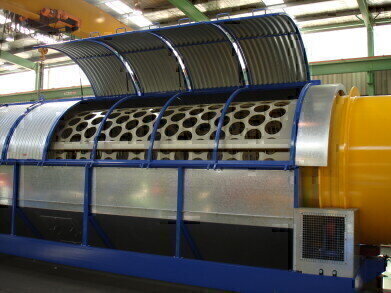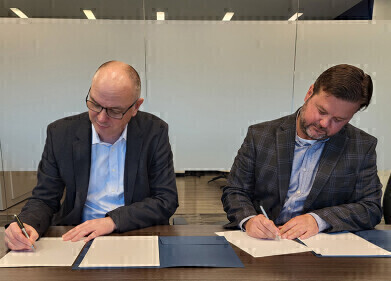Waste Management
Automated waste sortation for councils and regional bodies
Mar 01 2010
An Australian waste sortation specialist has devised a turnkey system for councils and regional bodies which uses automated primary sortation as a fast starting-point to separate different types of waste.
The system from Industrial Conveying (Australia) predominantly uses conveyors and controls to almost completely eliminate manual intervention.
At the same time it speeds up sortation of all types of recyclable material collected by council garbage services.
A significant aspect of the turnkey solution is a ‘trommel’ system, which, along with all associated conveyors and handling equipment are designed and manufactured at Industrial Conveying’s plant in Bendigo, Victoria.
The trommel is a two-stage self contained customisable technology responsible for automated primary sortation of the co-mingled product.
Using the trommel can, in many cases, all but eliminate the system of manual sortation at the primary stage, which for a long time has been the solution of choice by most councils and waste handling authorities around Australia.
Used for primary sortation of co-mingled products, the trommel sorts beverage containers such as plastic, glass and ferrous items (aluminium cans and steel cans). It has two grades of screens and is 10 m long x 2m diameter (nominally).
Its two stages of processing involve different screening processes and work as follows:
Stage 1 – fines separation: Using small diameter holes in the screens, stage 1 takes fines out of the system – items such as tiny bits of broken glass and bottle tops - and allows the recyclables to continue on to stage 2.
Stage 2 – separating beverage containers and paper - has larger diameter holes in its screen which allows these beverage products to drop through whereas any paper/cardboard product in the mix is conveyed away to a secondary sorting system. This includes paper-based product such as newspapers, magazines and catalogues as well as some cardboard.
The trommel is a highly effective primary sorter, however a small amount of carry-through paper is always likely to come through so at this point all product that has dropped through the stage 2 screen of the trommel is deposited onto a ‘bounce adherence’ conveyor to find this paper and move it to the main paper stream where it belongs.
This bounce adherence conveyor belt oscillates up and down to make the paper and cardboard products grip, thus moving them up along the conveyor while the remaining beverage container waste travels downwards with gravity.
All paper product taken up by the adherence bounce conveyor again joins with the main paper stream.
Product discharged from the bottom of the bounce adherence conveyor gets sorted and separated as glass, steel, aluminium and plastic.
An air separation system picks up plastic product while the heavier products such as glass do not get picked up by this.
At the very end of the system, operators physically sort and separate the glass according to colour (clear, green or brown). This task is the only manual element of the entire waste sortation system.
Industrial Conveying’s installation crew is used because of its deep familiarity with equipment and the ability to carry out expedient work.
Trommel-based waste handling systems can be designed and installed as an OEM solution or as a re-fit to an existing site where space constraints may be limited.
Events
WEATHER • CLIMATE • WATER / EARTH OBSERVATIONS / GREEN ECONOMY
Oct 29 2024 St. Petersburg, Russia
Oct 30 2024 Hong Kong
Nov 05 2024 Toronto, Canada
Nov 06 2024 Ho Chi Minh City, Vietnam
Nov 12 2024 Valencia, Spain













